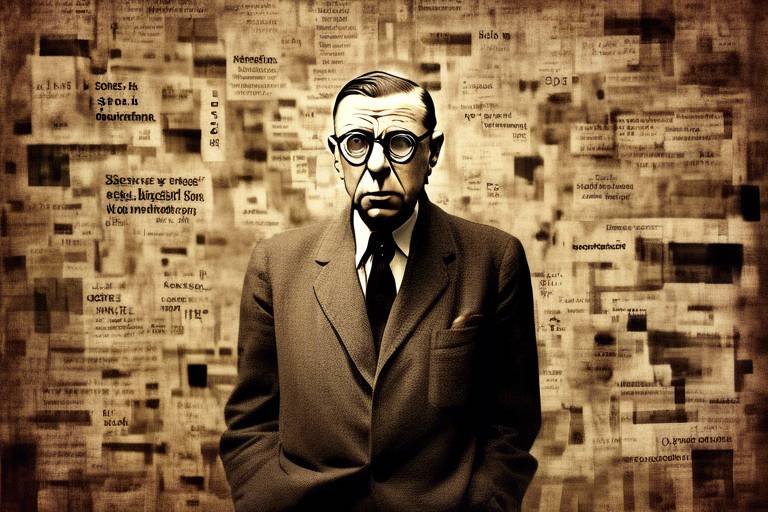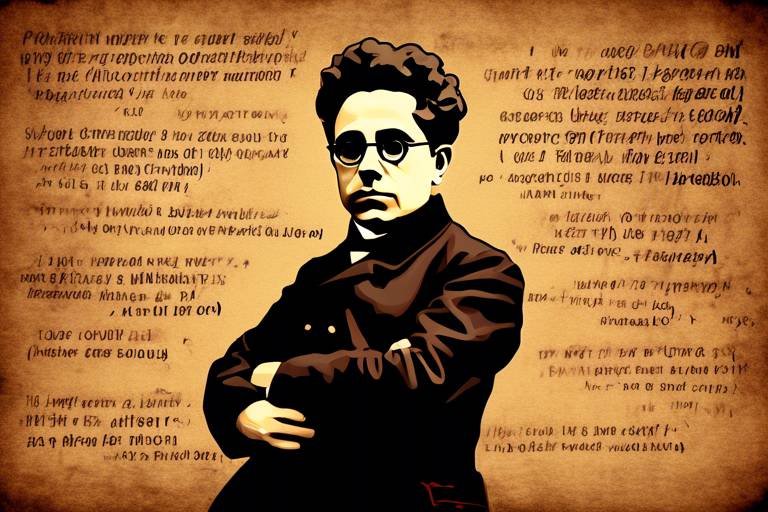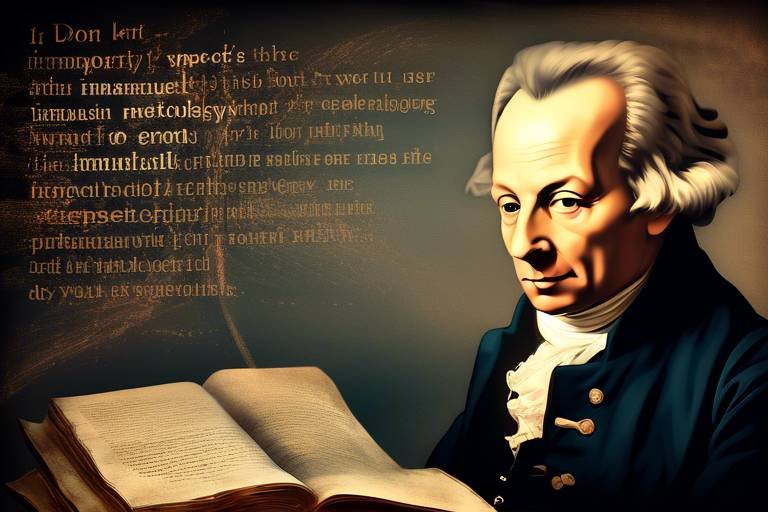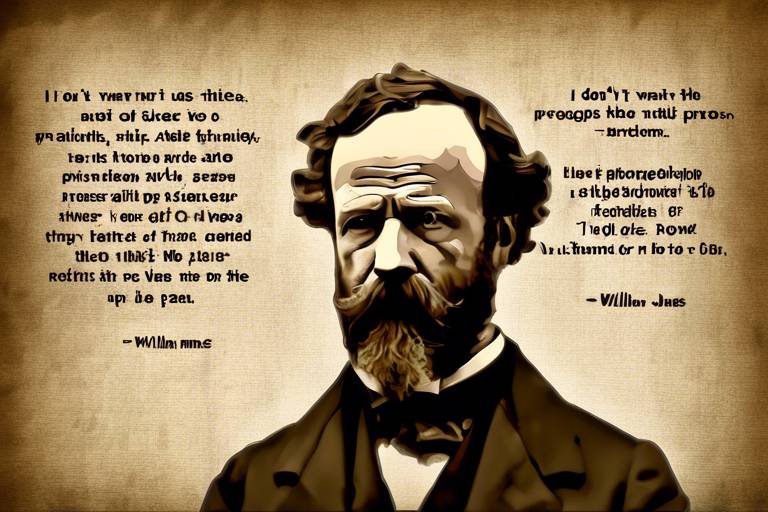Understanding Jacques Lacan's Psychoanalysis Theories
Have you ever wondered how our minds work beneath the surface? The theories of Jacques Lacan, a French psychoanalyst, provide a fascinating lens through which we can explore the complexities of human psychology. His ideas challenge conventional notions of the unconscious, identity, and desire, making them a cornerstone of modern psychoanalytic thought. Lacan's work is not just academic; it resonates with our everyday experiences, illuminating the hidden dynamics that shape our relationships and sense of self.
One of the most intriguing aspects of Lacan's theories is his assertion that the unconscious is structured like a language. This means that our thoughts and desires are not random; they are influenced by the symbolic structures of society and the language we use. Lacan believed that understanding these structures could lead to profound insights into our behaviors and motivations. So, buckle up as we delve into the intricate tapestry of Lacan's psychoanalysis, where language, identity, and desire intertwine in unexpected ways!
Lacan's notion of the Real is a game-changer in psychoanalysis. Unlike traditional concepts that focus on the conscious and unconscious mind, the Real represents what lies beyond language and symbolization. It's that elusive part of our experience that we can sense but can never fully articulate. Imagine trying to describe a breathtaking sunset; no matter how hard you try, words can never capture its essence. This is akin to the Real—it profoundly influences our desires and experiences, yet remains just out of reach.
Now, let’s dive into one of Lacan's most famous concepts: the Mirror Stage. This pivotal moment occurs in early childhood when a child first recognizes their own reflection. It’s a significant milestone that marks the formation of the ego. This identification with one’s image leads to a lifelong quest for identity, as individuals grapple with how they see themselves versus how they are perceived by others. Think of it as looking into a funhouse mirror; the reflection may be distorted, yet it shapes how we view ourselves and interact with the world.
Within this context, the Imaginary Order comes into play. It encompasses the realm of images and illusions that shape our perceptions and relationships. Our sense of self is heavily influenced by the images we project and the desires we absorb from others. This interplay can create a complex web of relational dynamics. For instance, consider the way social media influences our self-image—often, we find ourselves chasing an ideal that may not even exist, all based on curated images and perceptions.
Lacan emphasizes the role of identification in the Imaginary Order. We often form our identities based on images and desires projected by others, leading to a continuous cycle of seeking validation and acceptance. This can result in a fragmented sense of self, as we oscillate between different identities based on external expectations. It's like wearing different masks at a masquerade ball—each mask represents a facet of our identity, but none fully encapsulates who we are.
In contrast, the Symbolic Order involves language and societal structures. Lacan highlights how these realms interact to shape human experience and subjectivity. The Symbolic Order provides the framework through which we articulate our desires and navigate our social world. It is here that the rules of language and culture come into play, influencing our identity and desires in profound ways. Understanding this interplay can unlock new perspectives on our motivations and relationships.
Lacan's theories have significantly influenced contemporary psychoanalytic practice. Therapists now consider the role of language, desire, and the unconscious in understanding patients' experiences. This shift encourages a deeper exploration of how individuals articulate their struggles and desires, leading to more nuanced therapeutic approaches. By integrating Lacan's insights, therapists can help clients navigate the complexities of their identities and relationships, ultimately fostering greater self-awareness and healing.
At the heart of Lacan's framework is the Symbolic Order, the domain of language and law. Here, social structures and cultural norms shape our desires and identities. This order plays a crucial role in how we relate to ourselves and others. It’s like the rules of a game; understanding them is essential to playing effectively. When we grasp the Symbolic Order, we can better navigate the social landscape and understand the forces that shape our desires.
Lacan famously stated that the unconscious is structured like a language. This idea emphasizes how language shapes our unconscious desires and thoughts, fundamentally altering our understanding of human psychology. It suggests that our innermost feelings and motivations are not merely instinctual but are deeply intertwined with the language we use to express ourselves. This perspective invites us to examine how our words and expressions reflect our hidden desires.
Finally, Lacan's concept of desire is intricately linked to the notion of lack. He suggests that our desires emerge from a fundamental sense of incompleteness. This sense of lack drives our actions and relationships throughout life. It’s like chasing a mirage; the more we pursue it, the more we realize it’s just out of reach. Understanding this dynamic can lead to greater self-awareness and help us navigate our relationships with others more effectively.
- What is Jacques Lacan known for? Lacan is known for his contributions to psychoanalysis, particularly his theories on the unconscious, identity, and the role of language in shaping human experience.
- What is the Mirror Stage? The Mirror Stage is a critical moment in early childhood when a child recognizes their reflection, marking the formation of the ego and a lifelong quest for identity.
- How do Lacan's theories influence therapy? Lacan's theories encourage therapists to consider the role of language, desire, and the unconscious, fostering a deeper understanding of patients' experiences.
- What does Lacan mean by the Symbolic Order? The Symbolic Order refers to the domain of language and societal structures that shape our desires and identities.

The Concept of the Real
Jacques Lacan's concept of the Real is a profound and challenging aspect of his psychoanalytic theory. It represents a realm that exists beyond language and symbolization, a territory that is often elusive and difficult to grasp. Imagine standing on the edge of a vast ocean, where the waves crash against the shore, embodying the raw and unfiltered essence of existence. This is akin to the Real—an aspect of reality that resists representation and defies our attempts to articulate it. It is not just a void; rather, it is filled with the unnameable and the unrepresentable, influencing our desires and experiences in ways we may not fully comprehend.
The Real is crucial in understanding how we navigate our lives. It serves as a backdrop to our experiences, often surfacing in moments of crisis or trauma when our usual modes of understanding fail us. Think about those instances when you face something so overwhelming that words escape you—this is the intrusion of the Real into your life. It reminds us that there are aspects of our existence that remain outside the grasp of language, shaping our psyche in profound ways.
To grasp the significance of the Real, it is essential to recognize its relationship with two other orders in Lacan's theory: the Imaginary and the Symbolic. These three realms interact dynamically, influencing our subjectivity and our understanding of ourselves. The Imaginary is where images and illusions reside, shaping our perceptions and identities, while the Symbolic encompasses the structures of language and societal norms that govern our interactions. The Real, however, stands apart, serving as a reminder of what lies beyond our constructed realities.
In Lacanian psychoanalysis, the Real can manifest in various ways, often as a source of anxiety or discomfort. It is the reminder of our limitations and the incompleteness that permeates our existence. This sense of lack is pivotal, as it drives our desires and motivates our actions. When we confront the Real, we are often faced with the unsettling truth of our own vulnerabilities and the inherent chaos of life.
Understanding the Real also requires an exploration of how it intersects with desire. Our desires are not merely whims; they are deeply rooted in our encounters with the Real. For instance, when we experience a profound longing for something we cannot articulate, we are engaging with the Real. This desire emerges from a place of incompleteness, suggesting that what we seek is not just an object but an attempt to bridge the gap created by the Real's presence in our lives.
In summary, Lacan's concept of the Real is a complex and multifaceted idea that challenges our conventional understanding of reality. It urges us to confront the limitations of language and the structures we create to make sense of our experiences. By acknowledging the Real, we can gain deeper insights into our desires and the underlying motivations that drive our actions. In this way, the Real becomes not just a theoretical construct but a vital component of our psychological landscape, shaping our identities and our interactions with the world around us.

The Mirror Stage
The Mirror Stage is one of the most fascinating and pivotal concepts in Jacques Lacan's psychoanalytic theories. Imagine a baby, just a few months old, gazing into a mirror for the first time. What do they see? It's not just a reflection; it's a moment of profound realization. This stage marks the formation of the ego, where the infant identifies with their own image. This identification is not merely about recognizing oneself; it’s about the beginning of a lifelong quest for identity. In this moment, the child experiences a sense of wholeness, even though they are still in a fragmented state. This paradox of feeling complete while being incomplete sets the stage for all future desires and relationships.
But why is this significant? Well, Lacan argues that this initial encounter with one's image creates a fundamental split within the self. On one hand, there's the idealized image in the mirror, representing a perfect self, and on the other, the real self, which is always lacking and striving for that ideal. This gap between the ideal and the real generates a sense of desire that propels individuals throughout their lives. It’s as if the mirror becomes a symbol of all our aspirations and the unattainable nature of our desires.
As the child grows, the implications of the Mirror Stage ripple through their interactions and relationships. The way we perceive ourselves and others is heavily influenced by this early experience. For instance, when we look at others, we often project our desires and insecurities onto them, creating a complex web of identification and misidentification. This can lead to a series of relational dynamics that are often fraught with tension and misunderstanding. We might find ourselves longing for the idealized image of others, just as we did with our own reflection.
To illustrate this idea further, let's consider a simple table that outlines the key aspects of the Mirror Stage:
| Aspect | Description |
|---|---|
| Identification | The process of recognizing oneself in the mirror. |
| Ego Formation | The development of the ego through reflection and identification. |
| Desire | The gap between the ideal self and the real self creates desire. |
| Interpersonal Dynamics | How we perceive and relate to others based on our reflections. |
This stage is not just a fleeting moment in infancy; it lays the groundwork for how we navigate our social world. As adults, we often chase after the idealized versions of ourselves and others, leading to a perpetual state of longing. This desire can manifest in various ways, from our career aspirations to our romantic relationships. Think about it: how often do we find ourselves comparing our lives to the seemingly perfect images we see on social media? This is a direct reflection of the Mirror Stage's influence, where the ideal self becomes an elusive target we can never fully attain.
In conclusion, the Mirror Stage is a crucial element in Lacan's psychoanalytic framework. It encapsulates the struggle between our idealized self and our fragmented reality, shaping our desires and relationships in profound ways. Understanding this stage allows us to better comprehend the intricacies of human psychology and the complex dynamics that govern our interactions with ourselves and others.
- What is the Mirror Stage? The Mirror Stage is a concept in Lacan's theory that describes the moment an infant recognizes their reflection, marking the formation of the ego.
- Why is the Mirror Stage important? It highlights the split between the ideal self and the real self, influencing our desires and interpersonal relationships throughout life.
- How does the Mirror Stage affect adult relationships? The desire for idealized images can lead to comparison and longing in relationships, often resulting in dissatisfaction.
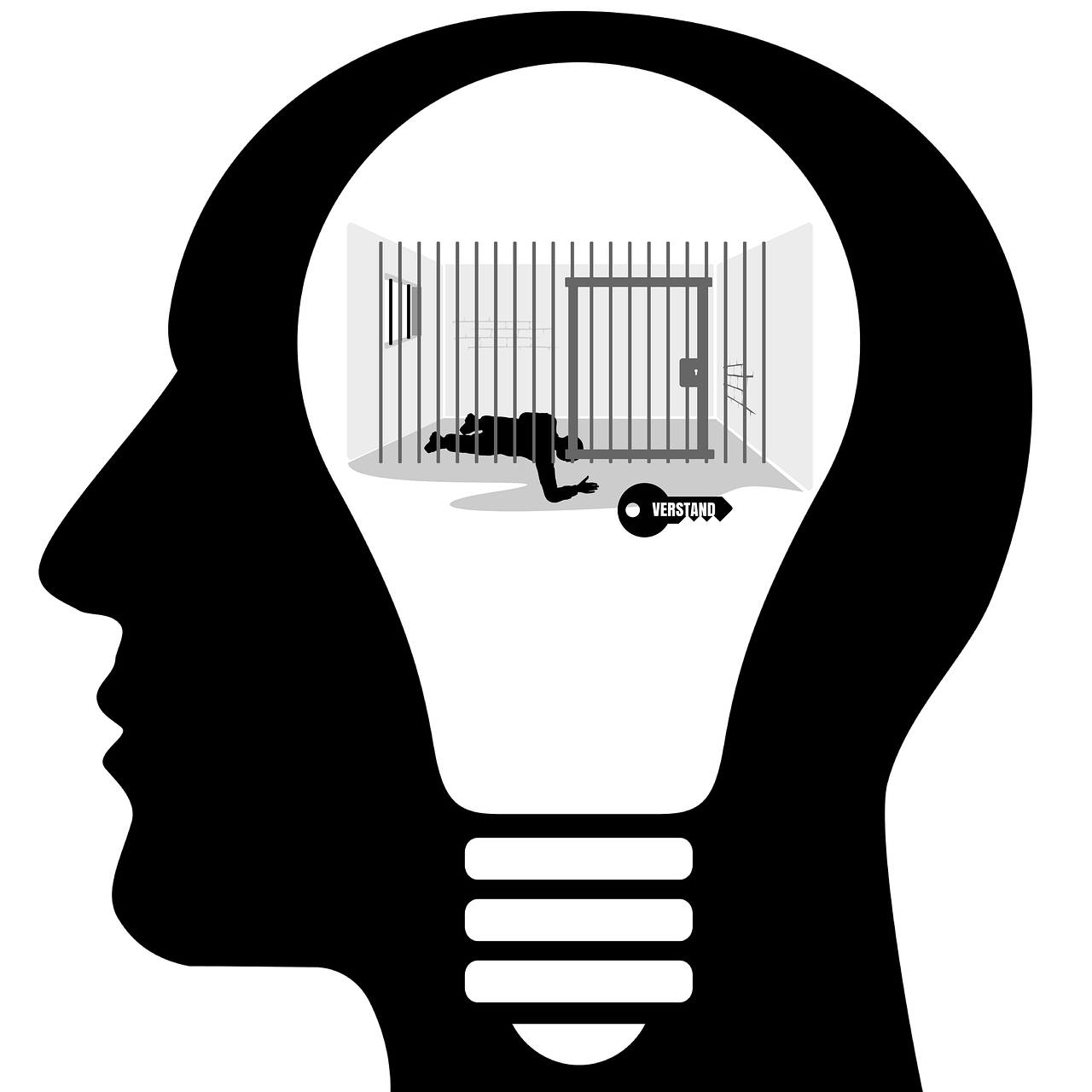
The Role of Imaginary Order
The Imaginary Order, as conceived by Jacques Lacan, is a fascinating realm that encompasses the world of images, illusions, and the interplay of perception. Imagine it as a vibrant tapestry woven from the threads of our early experiences and interactions. This order is pivotal in shaping how we perceive ourselves and others, influencing our identities and relationships in profound ways. It is within this realm that we form our initial understanding of who we are, often through the lens of how we are seen by others.
At its core, the Imaginary Order is about identification. As infants, we encounter our own reflection for the first time, and this moment is not just a simple recognition; it is a pivotal experience that sparks the formation of our ego. This moment, known as the Mirror Stage, sets the stage for a lifelong quest for identity, where we continually seek to reconcile our self-image with how we are perceived by those around us. In this way, the Imaginary Order serves as a mirror, reflecting our desires and fears back to us.
Moreover, the Imaginary Order is not just about self-perception; it also encompasses the complex dynamics of our relationships with others. We often find ourselves projecting our desires onto others, seeking validation and affirmation. This projection creates a web of relational dynamics, where our identities are shaped by the images we hold of ourselves and the desires we perceive in those around us. For instance, think about how we often admire certain traits in others, leading us to aspire to those qualities ourselves. This can lead to a cycle of identification that is both enriching and, at times, confusing.
However, the Imaginary Order is not without its challenges. The illusions it creates can lead to a fragmented sense of self. When our self-worth becomes overly tied to external validation, we risk losing touch with our authentic selves. This is where Lacan’s insights become particularly relevant. He encourages us to navigate the complexities of our identities with awareness, understanding that while the Imaginary Order shapes us, it does not define us entirely.
In summary, the Imaginary Order plays a crucial role in our psychological development and relational dynamics. It is a space where images and desires collide, shaping our perceptions and influencing our sense of self. As we engage with this order, we must remain mindful of the illusions it presents, striving to cultivate a deeper understanding of our identities beyond the reflections we encounter in the world around us.
- What is the Imaginary Order in Lacan's theory?
The Imaginary Order refers to the realm of images and illusions that shape our perceptions of ourselves and others, influencing our identities and relationships. - How does the Mirror Stage relate to the Imaginary Order?
The Mirror Stage is a crucial moment in the Imaginary Order where an infant first recognizes their reflection, marking the formation of their ego and identity. - What are the implications of the Imaginary Order on relationships?
The Imaginary Order influences how we project our desires onto others, shaping our relational dynamics and sense of self.
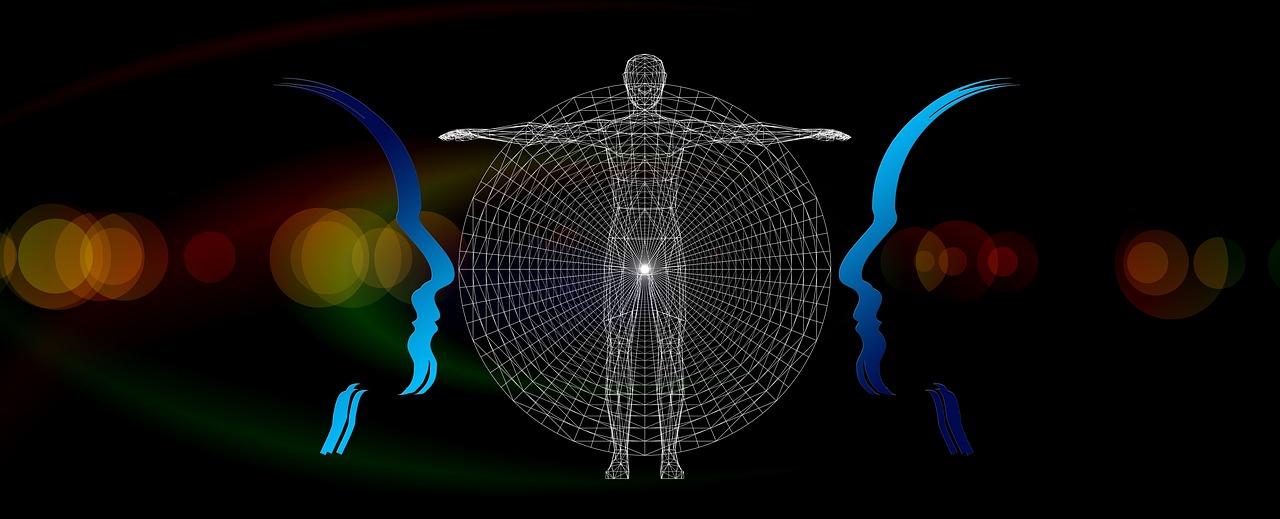
Identification and Desire
In the intricate tapestry of Lacanian theory, the concepts of identification and desire are woven together like threads in a rich fabric. At the heart of this relationship lies the idea that our identities are not merely self-constructed but are profoundly influenced by the images and desires projected by others. Imagine walking through a gallery filled with portraits; each image reflects not just the subject’s essence but also our own perceptions and longings. This is the essence of the Imaginary Order, where our sense of self is continuously shaped by the reflections we see in others.
When we talk about identification, we are delving into how individuals form their identities based on external images and societal expectations. For instance, think about a child who idolizes a parent or a celebrity. This admiration can lead to a desire to emulate that figure, creating a complex web of identification that shapes the child's own self-image. In Lacanian terms, this process is not just about imitation but also about a deeper longing to fulfill an ideal that seems just out of reach. This is where desire enters the picture; it becomes the driving force behind our quest for identity.
To further understand this dynamic, we can consider the following points:
- Desire is relational: It emerges from our interactions with others, suggesting that we are not isolated beings but rather exist in a network of relationships that influence our identities.
- Projection and Reflection: Our desires often reflect what we perceive in others, leading to a cycle where identification fuels desire, and desire, in turn, shapes our identities.
- Complexity of Relationships: The interplay of identification and desire can lead to complicated relational dynamics, where individuals may feel torn between their authentic selves and the identities they adopt based on external influences.
In essence, Lacan posits that our desires are not simply personal whims but are deeply entangled with the desires of others. This interdependence creates a landscape of identification that is both rich and fraught with tension. It begs the question: how much of who we are is truly our own, and how much is a reflection of those we admire or aspire to be? This ongoing dialogue between self and other is what makes the study of identification and desire in Lacanian psychoanalysis so compelling.
Ultimately, understanding this relationship is crucial for anyone interested in the nuances of human psychology. It opens up discussions about how we form our identities, the desires that drive us, and the complex web of social interactions that shape our lives. As we navigate our existence, we must remain aware of these influences, recognizing that our identities are not static but are continually evolving in response to the desires we encounter in the world around us.
- What is the significance of identification in Lacanian theory?
The significance lies in how our identities are shaped by external images and desires projected by others, influencing our self-perception and relationships. - How does desire relate to lack in Lacanian psychoanalysis?
Desire is intricately linked to a sense of lack, suggesting that our motivations stem from an inherent incompleteness that drives our actions and relationships. - Can understanding identification and desire improve therapeutic practices?
Yes, by recognizing these dynamics, therapists can better understand their patients' experiences and the underlying motivations behind their behaviors.
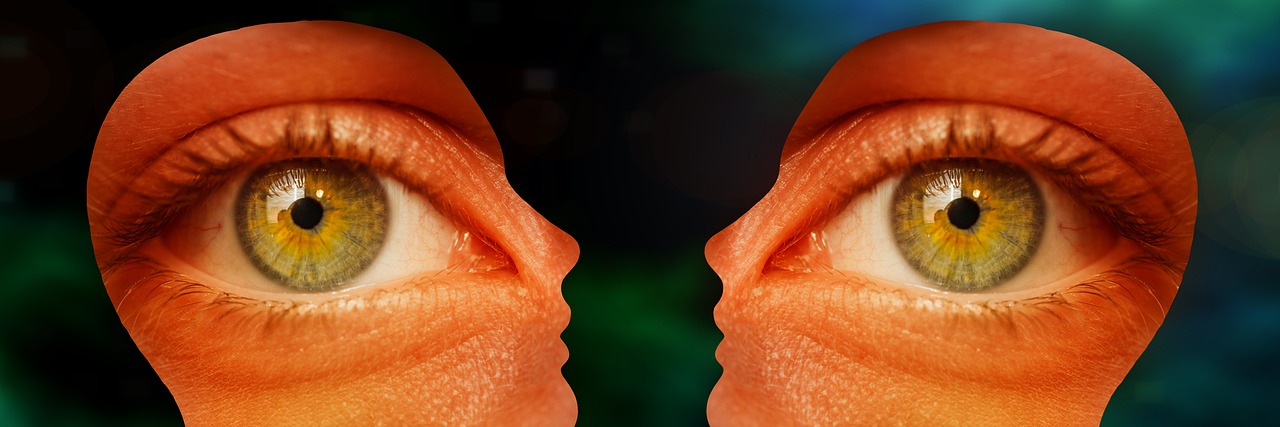
The Imaginary and the Symbolic
In Jacques Lacan's psychoanalytic framework, the distinction between the Imaginary and the Symbolic is not just a theoretical nuance; it represents two fundamental ways in which we experience and interpret our world. The Imaginary Order is all about images, illusions, and the realm of the visual. It encompasses our perceptions of ourselves and others, often shaped by the reflections we see in the world around us. Think of it as a vibrant tapestry of identities woven from the threads of our fantasies and the expectations projected onto us by society. This is where our sense of self is formed, often through identification with images that may or may not reflect reality.
On the flip side, the Symbolic Order is rooted in language, law, and societal norms. It is the structure that gives meaning to our experiences and helps us navigate the complexities of social interactions. Imagine the Symbolic Order as a vast library filled with books of rules, languages, and cultural codes that dictate how we express our desires and understand our identities. In this realm, language is not just a tool for communication; it is a powerful force that shapes our unconscious desires and influences our behavior.
The interplay between these two orders is crucial for understanding human psychology. For instance, when we look in the mirror and see our reflection, we are engaging with the Imaginary. Yet, the moment we articulate our identity—whether through words, social roles, or cultural expectations—we step into the Symbolic. This duality creates a dynamic tension in our lives, one that can lead to confusion and conflict. We often find ourselves caught between who we think we are (Imaginary) and who society expects us to be (Symbolic).
This relationship can be illustrated through the following table, which highlights key differences between the Imaginary and Symbolic Orders:
| Aspect | Imaginary Order | Symbolic Order |
|---|---|---|
| Nature | Visual, Illusory | Verbal, Structural |
| Focus | Self-Image, Identification | Language, Social Norms |
| Formation of Identity | Through images and reflections | Through language and societal roles |
| Emotional Impact | Desire, Fantasy | Law, Order |
Understanding the relationship between the Imaginary and the Symbolic is essential for grasping Lacan's theories. It sheds light on how our identities are crafted from both personal fantasies and societal expectations. In essence, we are all navigating a complex dance between these two realms, striving to find a balance that allows us to express our true selves while adhering to the structures that govern our lives.
- What is the Imaginary Order? The Imaginary Order refers to the realm of images and illusions that shape our perceptions and identities.
- How does the Symbolic Order influence our lives? The Symbolic Order encompasses language and societal norms, which dictate how we express our desires and understand ourselves within a social context.
- What is the significance of the relationship between the Imaginary and Symbolic Orders? This relationship highlights the tension between personal identity and societal expectations, revealing how we navigate our sense of self in a complex world.

Impact on Psychoanalytic Practice
Jacques Lacan's theories have had a profound impact on contemporary psychoanalytic practice, reshaping the way therapists approach their patients and understand the complexities of the human psyche. His emphasis on the intricacies of language, desire, and the unconscious has prompted a significant shift in therapeutic methodologies. Instead of merely addressing symptoms, therapists are now encouraged to explore the deeper layers of a patient’s experience, diving into the rich tapestry of their linguistic expressions and relational dynamics.
One of the most notable contributions of Lacan to psychoanalysis is the idea that language is not just a tool for communication but a fundamental structure that shapes our very thoughts and desires. This perspective has led therapists to adopt a more nuanced approach, where the words patients choose to express their feelings and experiences are seen as gateways to their unconscious desires. For instance, a patient’s slip of the tongue or a seemingly trivial comment can reveal deep-seated conflicts or desires that warrant further exploration. This shift encourages a dynamic interaction between the therapist and patient, where the therapeutic space becomes a site for unveiling hidden meanings.
Moreover, Lacan's concept of the Real, the Imaginary, and the Symbolic orders provides a framework for understanding the complexities of human experience. Therapists now often consider how these three realms interact in a patient’s life, influencing their identity and relationships. For example, a patient struggling with feelings of inadequacy might be encouraged to reflect on how their experiences in the Imaginary realm—such as their self-image and the images projected by others—interact with the Symbolic realm of societal expectations and language. This holistic approach allows for a deeper understanding of the patient's struggles, paving the way for more effective therapeutic interventions.
The incorporation of Lacanian theory into psychoanalytic practice also emphasizes the importance of desire and lack in shaping human behavior. Therapists are increasingly aware that a patient’s actions and decisions are often driven by an underlying sense of incompleteness. This awareness allows for a more empathetic understanding of patients' motivations, helping therapists guide them toward recognizing and articulating their desires. By exploring the interplay between desire and lack, therapists can assist patients in developing a more profound understanding of their emotional landscape, ultimately leading to personal growth and healing.
In summary, Lacan's influence on psychoanalytic practice has been transformative. His theories encourage therapists to delve deeper into the complexities of language, identity, and desire, fostering a therapeutic environment that is rich in exploration and understanding. This shift not only enhances the therapeutic relationship but also empowers patients to engage in their journeys of self-discovery, making the therapeutic process a collaborative and enlightening experience.
- What is Jacques Lacan known for?
Lacan is known for his contributions to psychoanalysis, particularly his theories on the unconscious, language, and desire. - How does Lacan's theory differ from traditional psychoanalysis?
Lacan's theory emphasizes the role of language and the structure of the unconscious, whereas traditional psychoanalysis often focuses more on symptoms and behavior. - What are the three orders in Lacanian theory?
The three orders are the Real, the Imaginary, and the Symbolic, each representing different aspects of human experience and identity. - How can Lacan's theories be applied in therapy?
Therapists can apply Lacan's theories by focusing on language, exploring desires and lacks, and understanding the interplay between the Imaginary and Symbolic orders in a patient's life.
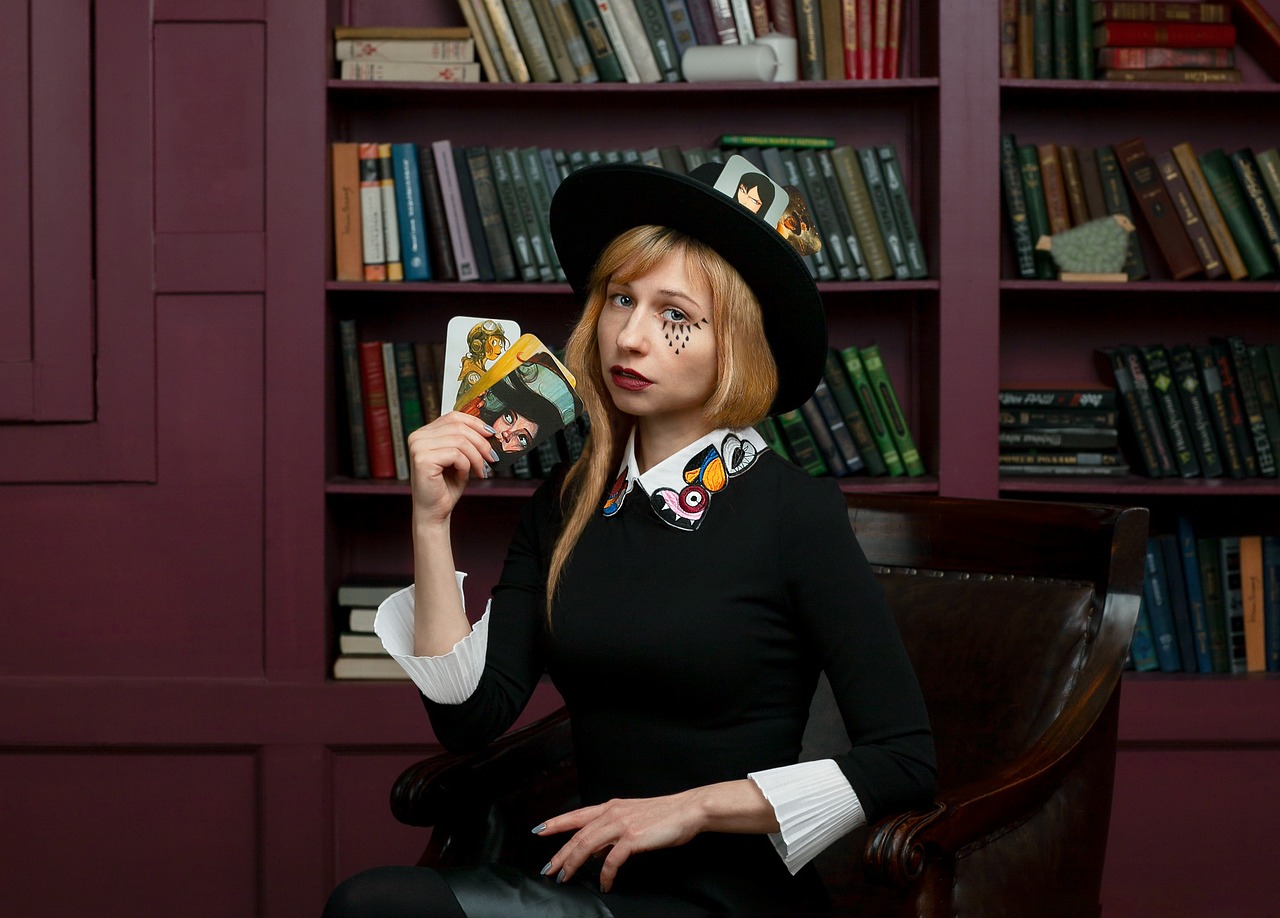
The Symbolic Order
The Symbolic Order is a fundamental concept in Jacques Lacan's psychoanalytic theory, representing the realm where language and law intersect. It serves as a framework through which individuals navigate their desires and identities, shaped by the cultural norms and social structures that permeate our lives. Think of the Symbolic Order as the blueprint of societal existence, dictating how we communicate, relate, and ultimately understand ourselves and others. Just as a map guides a traveler, the Symbolic Order provides a structure that influences our thoughts, behaviors, and interactions.
In this order, language plays a crucial role. Lacan famously posited that “the unconscious is structured like a language.” This means that our unconscious thoughts are not chaotic or random; rather, they are organized and influenced by the language we use. The words we choose, the metaphors we employ, and the narratives we construct all reflect the cultural and societal frameworks that shape our identities. When we speak, we are not just conveying information; we are engaging with a complex web of meanings and associations that have been constructed over time.
Moreover, the Symbolic Order encompasses more than just language. It includes the laws, regulations, and social norms that govern our behavior. These elements create a structure that dictates what is acceptable or taboo in our society. For example, consider the way language can both liberate and constrain us. While it allows us to express our desires and connect with others, it also imposes limitations on how we can articulate those desires. This duality is at the heart of Lacan's exploration of human subjectivity.
To further illustrate the impact of the Symbolic Order, let's consider a simple table that outlines its key components:
| Component | Description |
|---|---|
| Language | The means through which we communicate our desires and thoughts, shaping our understanding of the world. |
| Law | The societal rules and regulations that govern behavior, influencing our actions and interactions. |
| Social Norms | The accepted standards of behavior within a society, shaping our identities and relationships. |
Understanding the Symbolic Order also requires an appreciation of its relationship with the Imaginary Order. While the Imaginary Order is characterized by images, illusions, and the formation of the ego, the Symbolic Order provides the context and structure that governs how these images are interpreted and understood. This interplay between the two orders is crucial in shaping our experiences and identities.
In essence, the Symbolic Order is not just a passive backdrop; it actively shapes our desires and identities. It is a living structure that evolves with society, reflecting changes in language, culture, and social norms. As we navigate our lives, we are constantly engaging with this order, whether we realize it or not. The interplay between our individual desires and the collective norms of society creates a dynamic tension that can lead to both fulfillment and frustration.
As we delve deeper into Lacan's work, it becomes evident that the Symbolic Order is integral to understanding the complexities of human psychology. It challenges us to consider how our identities are constructed, how our desires are formed, and how we relate to the world around us. Ultimately, by exploring the Symbolic Order, we gain valuable insights into the intricate dance between language, desire, and the unconscious.
- What is the Symbolic Order in Lacan's theory? The Symbolic Order refers to the realm of language, law, and societal norms that shape our desires and identities.
- How does language influence our unconscious? Lacan suggests that the unconscious is structured like a language, meaning our thoughts are organized by the language we use.
- What is the relationship between the Symbolic and Imaginary Orders? The Symbolic Order provides the structure for understanding the images and identities formed in the Imaginary Order.
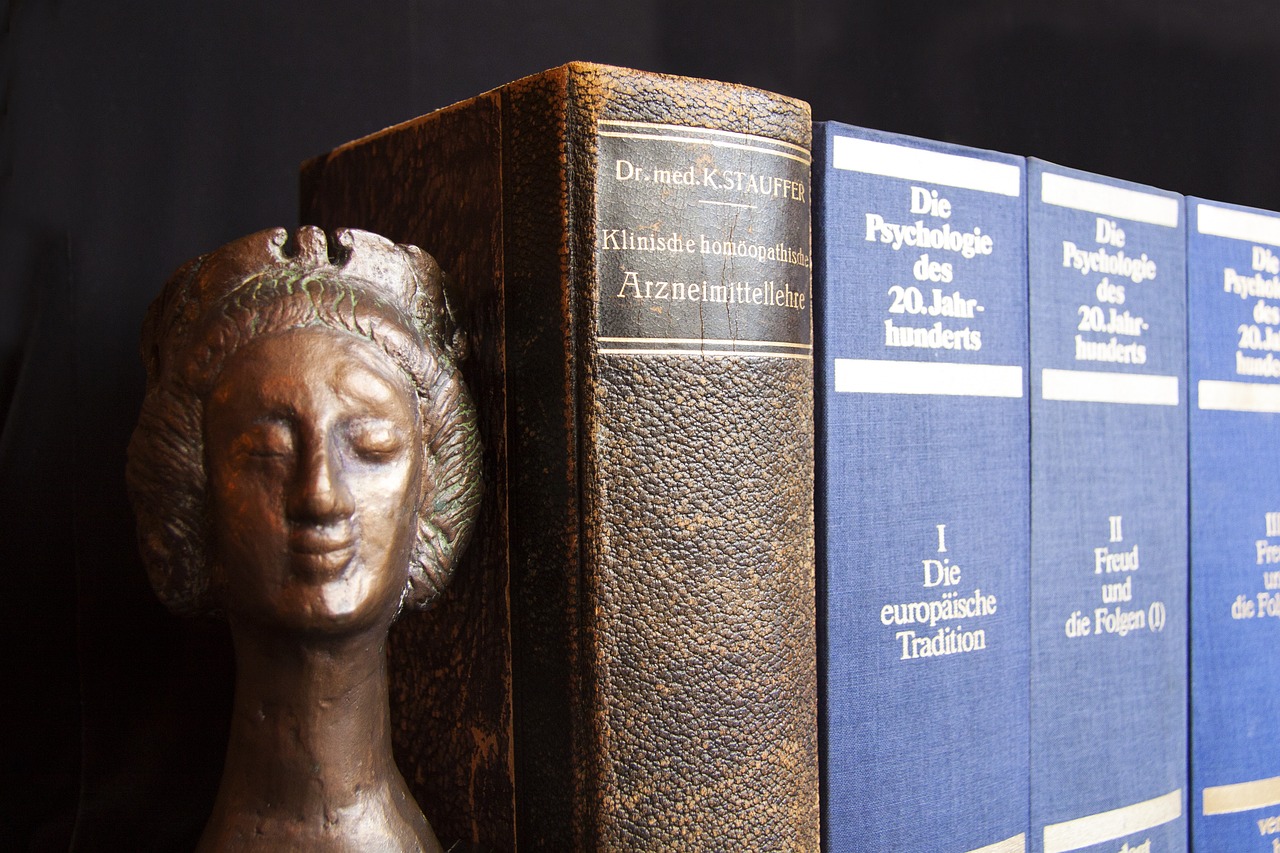
Language and the Unconscious
Lacan famously asserted that the unconscious is structured like a language, a phrase that resonates deeply within the realms of psychoanalysis and linguistics. This statement is not merely a theoretical abstraction; it serves as a powerful lens through which we can examine the intricate dance between language and our unconscious desires. Think of language as a map, guiding us through the complex terrain of our inner worlds, where every word and symbol carries layers of meaning that often elude our conscious understanding.
At its core, Lacan's theory suggests that our unconscious is not a chaotic void but rather a structured entity influenced by the linguistic frameworks we inhabit. Just as a map provides a way to navigate a landscape, language helps us articulate our thoughts and feelings, even those buried deep within our psyche. This relationship between language and the unconscious is pivotal because it unveils how our desires are often articulated through linguistic expressions, even when we are unaware of it. For instance, when someone expresses a longing for love or acceptance, what they are often revealing is a deeper, more complex desire rooted in their unconscious.
To illustrate this point further, consider the following aspects of how language interacts with the unconscious:
- Symbolic Representation: Words serve as symbols that represent our desires and fears. They can evoke emotions and memories that are otherwise inaccessible to our conscious mind.
- Repression and Return: Often, what we repress in our conscious thoughts finds a way to resurface through slips of the tongue or dreams, revealing the underlying desires that shape our actions.
- Desire's Expression: Language provides a means to express our desires, but it can also limit them. The words we choose reflect our understanding of ourselves and the world, shaping our identities in profound ways.
This intricate interplay between language and the unconscious not only shapes our individual identities but also influences our relationships with others. When we communicate, we are not just exchanging information; we are also engaging in a complex negotiation of desires and meanings. Our words can create connections or barriers, reflecting the underlying dynamics of our unconscious motivations.
Moreover, Lacan's insights challenge us to reconsider how we approach therapy and self-understanding. In the therapeutic setting, for instance, the words spoken by a patient are not just surface-level expressions; they are gateways into the unconscious. Therapists must listen not only to the content of what is said but also to the structure and rhythm of language, as these elements can reveal much about the patient's inner world.
In conclusion, Lacan’s assertion that the unconscious is structured like a language invites us to explore the profound connections between our linguistic expressions and our deepest desires. It encourages us to pay attention to the nuances of language, recognizing that our words are not just tools for communication but also reflections of our inner selves. By understanding this relationship, we can gain deeper insights into our motivations, relationships, and ultimately, our humanity.
- What does Lacan mean by saying the unconscious is structured like a language? Lacan suggests that the unconscious operates similarly to language, with its own syntax and rules that influence our desires and behaviors.
- How does language influence our desires? Language shapes our thoughts and feelings, often revealing desires that are not immediately apparent to our conscious mind.
- Why is understanding the relationship between language and the unconscious important in therapy? It allows therapists to delve deeper into a patient's psyche by analyzing the language used, uncovering hidden desires and motivations.

the unconscious is structured like a language,
This article explores the intricate theories of Jacques Lacan, focusing on his contributions to psychoanalysis, the unconscious, and the interplay between language and desire.
Lacan's notion of the Real challenges traditional psychoanalytic concepts, representing what is outside of language and symbolization, influencing our desires and experiences in profound ways.
The Mirror Stage is a crucial moment in Lacan's theory, marking the formation of the ego through the identification with one's own image, leading to a lifelong quest for identity.
The Imaginary Order encompasses the realm of images and illusions, shaping our perceptions and relationships, and influencing our sense of self and others in the developmental process.
Lacan emphasizes the role of identification in the Imaginary Order, where individuals form their identities based on images and desires projected by others, leading to complex relational dynamics.
Lacan contrasts the Imaginary with the Symbolic Order, which involves language and societal structures, highlighting how these realms interact to shape human experience and subjectivity.
Lacan's theories have significantly influenced contemporary psychoanalytic practice, prompting therapists to consider the role of language, desire, and the unconscious in understanding patients' experiences.
The Symbolic Order represents the domain of language and law, where social structures and cultural norms shape our desires and identities, playing a crucial role in Lacan's psychoanalytic framework.
Lacan famously stated that the unconscious is structured like a language, emphasizing how language shapes our unconscious desires and thoughts, fundamentally altering our understanding of human psychology. This assertion is not merely a poetic phrase; it encapsulates a profound insight into the workings of the mind. Just as language is governed by rules and structures, so too is the unconscious. It operates through a system of signifiers, each representing something that is often hidden or repressed.
To understand this concept, consider the following:
- Signifiers and Signified: In language, a signifier (a word) points to a signified (the concept it represents). Similarly, in the unconscious, our desires are expressed through signifiers that may not directly communicate their true meaning.
- Metaphor and Metonymy: Lacan argued that the unconscious employs mechanisms similar to literary devices. Metaphors substitute one idea for another, while metonymy connects related concepts. This reflects how our desires can be obscured or distorted.
- Dreams as Language: Lacan viewed dreams as a language of the unconscious, where symbols and images convey deeper meanings. Just as we decode a sentence, we must decode our dreams to uncover hidden desires.
This linguistic structure of the unconscious suggests that our thoughts and desires are not as straightforward as they seem. They are layered, complex, and often contradictory, much like the nuances of language itself. By recognizing this structure, we can better understand how our unconscious influences our behaviors, relationships, and overall psyche.
Lacan's concept of desire is intricately linked to the notion of lack, suggesting that our desires emerge from a fundamental sense of incompleteness, driving our actions and relationships throughout life.
This phrase suggests that the unconscious operates through a set of rules and structures similar to language, where desires are expressed through signifiers that represent deeper meanings.
Lacan's theory encourages therapists to explore the language of their patients' unconscious desires, helping to uncover hidden motivations and conflicts that shape their behaviors.
The Mirror Stage is crucial as it marks the formation of the ego and sets the foundation for identity development, influencing how individuals relate to themselves and others throughout their lives.
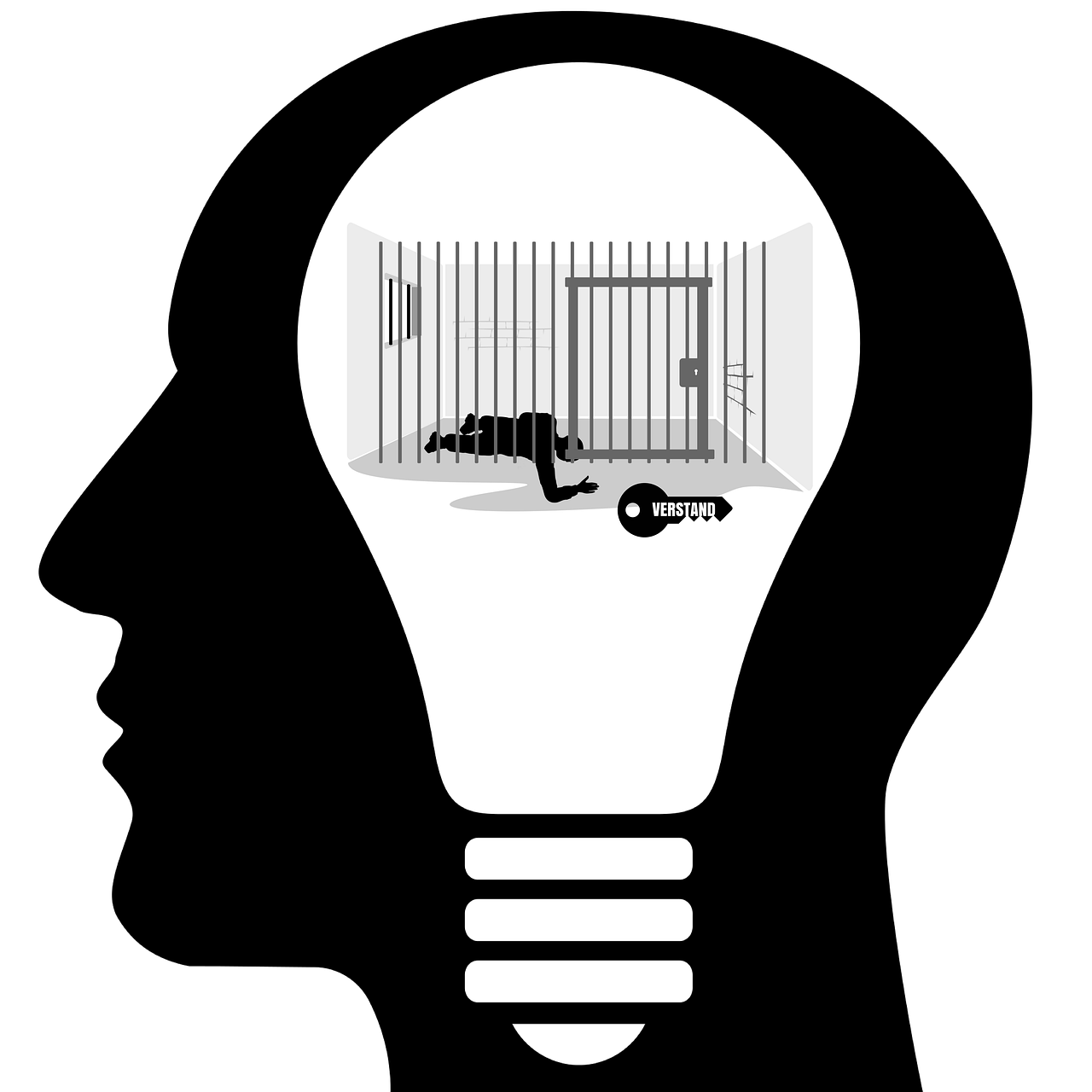
emphasizing how language shapes our unconscious desires and thoughts, fundamentally altering our understanding of human psychology.
This article explores the intricate theories of Jacques Lacan, focusing on his contributions to psychoanalysis, the unconscious, and the interplay between language and desire.
Lacan's notion of the Real challenges traditional psychoanalytic concepts, representing what is outside of language and symbolization, influencing our desires and experiences in profound ways.
The Mirror Stage is a crucial moment in Lacan's theory, marking the formation of the ego through the identification with one's own image, leading to a lifelong quest for identity.
The Imaginary Order encompasses the realm of images and illusions, shaping our perceptions and relationships, and influencing our sense of self and others in the developmental process.
Lacan emphasizes the role of identification in the Imaginary Order, where individuals form their identities based on images and desires projected by others, leading to complex relational dynamics.
Lacan contrasts the Imaginary with the Symbolic Order, which involves language and societal structures, highlighting how these realms interact to shape human experience and subjectivity.
Lacan's theories have significantly influenced contemporary psychoanalytic practice, prompting therapists to consider the role of language, desire, and the unconscious in understanding patients' experiences.
The Symbolic Order represents the domain of language and law, where social structures and cultural norms shape our desires and identities, playing a crucial role in Lacan's psychoanalytic framework.
Lacan famously stated that the unconscious is structured like a language, emphasizing how language shapes our unconscious desires and thoughts, fundamentally altering our understanding of human psychology. This idea is not just a theoretical assertion; it suggests that the words we use and the symbols we encounter are deeply intertwined with our innermost feelings and motivations. Think about it: every time we articulate a thought or feeling, we are not merely expressing ourselves, but also framing our experiences in a way that can either illuminate or obscure our true desires.
Consider the following points:
- The structure of language influences how we perceive reality.
- Words can evoke emotional responses that resonate with our unconscious mind.
- Language can create barriers to understanding our desires, as we might not have the words to express them fully.
For instance, when we use metaphors or analogies, we are not just embellishing our speech; we are tapping into deeper layers of meaning that resonate with our unconscious. This can either clarify our desires or complicate them, depending on how effectively we communicate what lies beneath the surface. In this sense, language acts as both a tool and a veil, shaping our understanding of ourselves and our relationships with others.
Lacan's concept of desire is intricately linked to the notion of lack, suggesting that our desires emerge from a fundamental sense of incompleteness, driving our actions and relationships throughout life.
Jacques Lacan is renowned for his contributions to psychoanalysis, particularly his theories on the unconscious, language, and desire.
Lacan posited that language structures our unconscious, shaping our desires and thoughts, which fundamentally alters our understanding of human psychology.
The Mirror Stage refers to a developmental phase where an individual identifies with their own image, forming their ego and influencing their identity throughout life.
The Imaginary Order is associated with images and illusions, while the Symbolic Order relates to language and societal structures, both of which interact to shape human experience.

Desire and Lack
When we dive into Lacan's concept of desire, we find ourselves staring into a mirror reflecting our deepest yearnings and the voids that shape them. Lacan suggests that our desires are not merely whims but are intricately linked to a fundamental sense of lack. Imagine walking through a vast desert; the thirst you feel is not just for water but for something deeper—an essence of completeness that eludes you. This sense of lack drives us, propelling our actions and relationships throughout life.
Lacan's theory posits that desire is born from this incompleteness, which means that we are always striving for something we believe will fill that void. This can manifest in various ways, such as:
- The pursuit of love and connection with others
- The quest for knowledge and understanding
- The desire for material possessions or achievements
Each of these pursuits is a reflection of our inner landscape, where our desires are colored by what we lack. For instance, someone who feels unloved may seek out relationships fervently, believing that a partner will bring about the fulfillment they crave. However, this is a double-edged sword, as the more we chase after these desires, the more we may realize that they are often unattainable, leading to a cycle of perpetual longing.
Furthermore, Lacan introduces the idea that desire is shaped by cultural and societal influences. Our environment, upbringing, and social constructs play a significant role in defining what we perceive as desirable. This means that our understanding of lack is not just personal but is also a collective experience influenced by the world around us. In this way, our desires can become a reflection of societal expectations, which can sometimes lead to disillusionment.
To illustrate this concept, consider the following table that juxtaposes desire and lack:
| Desire | Lack |
|---|---|
| Yearning for love | Feeling of loneliness |
| Aspiration for success | Sense of inadequacy |
| Need for validation | Fear of rejection |
In conclusion, Lacan's exploration of desire and lack opens up a profound dialogue about what it means to be human. We are driven by our desires, yet these desires are constantly informed by what we feel we lack. Understanding this interplay can lead to greater self-awareness and insight into our motivations. So, the next time you find yourself yearning for something, take a moment to reflect on what that desire reveals about your own sense of lack. What void are you trying to fill?
- What is the significance of Lacan's theory of desire?
Lacan's theory helps us understand that our desires are deeply rooted in feelings of incompleteness, influencing our relationships and actions throughout life. - How does societal influence shape our desires?
Our environment and cultural norms can dictate what we perceive as desirable, often leading to conflicts between personal desires and societal expectations. - Can understanding desire and lack improve my relationships?
Yes! Gaining insight into your own desires and the underlying lacks can foster better communication and understanding in relationships.
Frequently Asked Questions
- What is Jacques Lacan's concept of the Real?
The Real, in Lacan's theory, refers to what exists outside of language and symbolization. It's like that elusive feeling you get when trying to express something profound but finding words inadequate. This concept plays a significant role in shaping our desires and experiences, often influencing our lives in ways we might not fully understand.
- Can you explain the Mirror Stage?
The Mirror Stage is a pivotal moment in Lacan's theory, where a child first identifies with their own image in a mirror. Imagine seeing yourself for the first time and realizing that you are separate from your surroundings. This moment marks the beginning of ego formation and sets off a lifelong quest for identity and self-understanding.
- How does the Imaginary Order affect our relationships?
The Imaginary Order involves images and illusions that shape our perceptions of ourselves and others. Think of it as a filter through which we view our relationships. Our identities are often formed based on the images and desires projected by those around us, leading to complex dynamics in how we connect with others.
- What is the difference between the Imaginary and Symbolic Orders?
The Imaginary Order revolves around images and identities, while the Symbolic Order is all about language and societal structures. Picture the Imaginary as the colorful world of dreams and fantasies, and the Symbolic as the rules and laws that govern our reality. Together, they shape our experiences and understanding of ourselves and the world.
- How have Lacan's theories impacted psychoanalytic practice?
Lacan's ideas have profoundly influenced contemporary psychoanalysis, encouraging therapists to delve deeper into the roles of language, desire, and the unconscious. It's like adding a new lens to view the complexities of human behavior, allowing for a richer understanding of patients' experiences and motivations.
- What does Lacan mean by 'the unconscious is structured like a language'?
This famous statement suggests that our unconscious desires and thoughts are organized similarly to language. Imagine your mind as a vast library where every book represents a different thought or desire, organized in a way that shapes how you express yourself and interact with the world.
- How is desire connected to the concept of lack in Lacanian theory?
Lacan posits that our desires stem from a fundamental sense of lack or incompleteness. It's like a puzzle with a missing piece—this feeling of something being absent drives our actions and relationships throughout life, pushing us to seek fulfillment in various ways.




